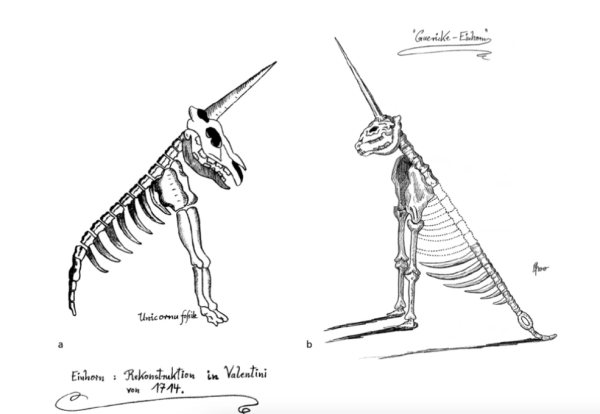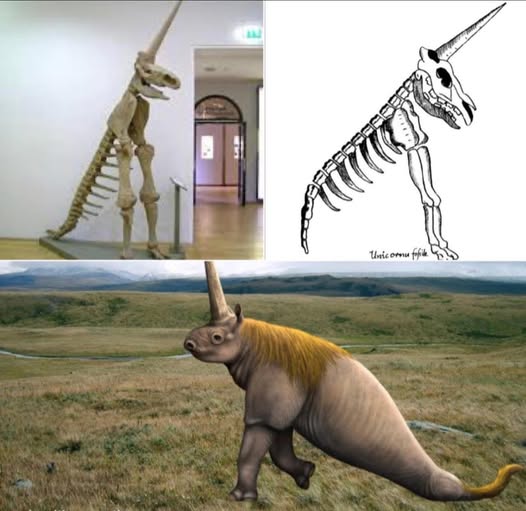The Magdeburg Unicorn: When False Fossils Create False Beliefs
Creation
In 1663, German scientist Otto von Guericke discovered a set of large fossilized bones near Magdeburg and proudly assembled them into what he believed was a real unicorn. The so-called “Magdeburg Unicorn” combined a narwhal tusk, a woolly rhinoceros’s skull, and mammoth bones—a mix of sea and land animals.

Despite its obvious inconsistencies, scientists of the day accepted it as genuine. For nearly 200 years, the creature was displayed and discussed as a legitimate scientific discovery before it was exposed as a false reconstruction.
Later research showed that the bones didn’t belong to the same animal at all. The “unicorn” was simply a product of human imagination—a reminder of how easily people can misinterpret evidence when driven by preexisting beliefs.
This case illustrates a broader problem in evolutionary science today: fossil fragments are often arranged and announced as “missing links” long before solid proof is established. Many of these so-called discoveries are later corrected or quietly dismissed when the evidence falls apart.

The Bible provides a clearer answer. God created animals “according to their kinds” (Genesis 1:25), fully formed from the beginning—not assembled through guesswork or gradual evolution. The Magdeburg Unicorn stands as a timeless example of how human theories fail when separated from the truth of God’s Word.

